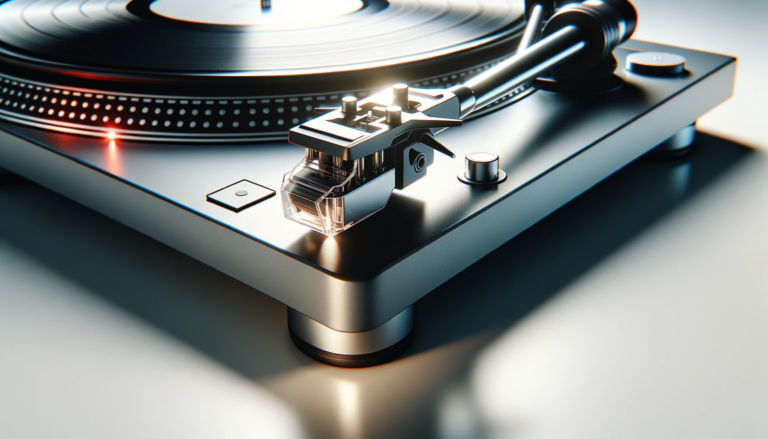Microphones Polar Patterns Explained in Simple Terms

We conduct independent testing and research of products, so you can make an informed decision before making a purchase. And when you do decide to make a purchase through our links, please note that we may earn a commission, but this does not affect the honesty of our reviews.
Microphones are the key to capturing sound. Understanding microphones’ polar patterns help you make an educated decision before buying a good microphone.
When you take a microphone and put it into your hand, you’re essentially creating a sort of antenna that picks up sounds from around you and sends them back to your device. However, not all microphones do this equally well. That’s because they have slightly different designs.
For example, some microphones are designed to pick up sound from very close objects, while others can capture sounds over long distances. As a result of this difference, you may notice certain patterns in how your mic records. These patterns are called “microphonic” patterns, and they can be used to determine the type of microphone you are using.
In order to understand these patterns, we need to talk about electromagnetic fields and their effects on electrical currents. Think of an electric current as a flow of electrons. Electrons move in straight lines, so if you imagine the electron movement in one direction, that would represent a positive charge.
What Is the Polar Pattern of a Microphone?

A microphone is basically a device that picks up sound waves from outside sources. When you use a microphone to record sounds, it usually converts them into an electrical signal. This means that you can turn this information into audio files.
In order to understand how microphones work, you need to know the basics of physics behind the sound. Sound travels through the air at different speeds depending on the temperature and humidity levels. If you want to capture the best quality recording possible, then you should try to keep these factors constant.
One way to do this is by using a microphone with a polar pattern. A polar pattern describes the shape of the diaphragm that’s inside the microphone. For example, a cardioid pattern has a dome-shaped diaphragm, while a figure eight pattern has two cones that are connected together.
A polar pattern can help you to achieve better recordings because it allows you to pick up more low frequencies than other types of mics.
What Do Microphones Polar Patterns Do?
Mic patterns are used by many musicians to create music. The best way to understand them is to listen to a few examples. Once you have a good idea of how they work, you will be able to use them in your own songs.
Polar patterns can be described as being either major or minor. This means that the pattern changes from one type to another. For example, in C Major, you would start with the tonic note (the root) and move through each scale degree until you reach the final chord.
In contrast, in G Minor, you would first go up to the third of the key, and then down to the fifth. You could also describe this as going up to the sixth, down to the fourth, and so on.
You should try to learn more about the different types of scales before you attempt any kind of musical composition.
How Are Polar Coordinates Used in Microphones?
Polar coordinates are numbers that describe the position of an object in a plane. For example, you can use them to measure the distance between two points on the surface of Earth. If you want to know more about this, then keep reading.
In order for a microphone to work properly, it needs to be positioned correctly relative to the sound source. This means that the microphone should point directly at the speaker. However, it’s also important to have the right amount of space between the mic and the speaker. Otherwise, you won’t get a clear recording.
To help you set up your microphone, you need to understand how to read polar coordinate measurements. The first thing you’ll notice is that these numbers are written in a counterclockwise direction. That is because the x-axis is always perpendicular to the y-axis.
If you’re trying to record something with your computer or smartphone, then you’ll find that the microphone will automatically adjust its position. However, if you don’t like the way that this happens, you can change the settings.
What Are the Polar Patterns of Built-in Microphones in Smartphones?
When you use a smartphone, you’re likely to be using its microphone at least once a day. That’s why it makes sense to know how to operate the device properly. If you want to learn more about the inner workings of this piece of technology, then keep reading below.
Smartphone mics have two main parts. One part is the diaphragm, which is located inside the phone itself. This component helps to convert sound waves into electrical signals.
The other part is the speaker, which is connected to the diaphragm and serves to amplify the sounds that are being picked up by the mic. When you speak into the mic, the vibrations from your voice travel through the air to the speaker.
It is important to understand that the diaphragms of different speakers will react differently to sound pressure. For example, some phones may respond better to high-frequency tones while others might work best with low frequencies.
What Does the Polar Pattern Graphs Tell Us?
The microphone is a device used to measure sound waves. It can be found on most audio equipment, including computer speakers and headphones. The microphone converts sound waves into an electrical signal that can be processed by the sound card.
The microphone has two main parts: a diaphragm and a magnet. The diaphragm is the part of the microphone that actually picks up the sound. It is suspended by a thin wire and is attached to the magnet.
The magnet is responsible for moving the diaphragm back and forth. When the magnet moves, the diaphragm moves back and forth, which causes the diaphragm to vibrate. The vibration is converted into an electrical signal that is sent to the sound card.
The sound wave is measured by the microphone’s ability to detect the vibration of the diaphragm. The more vibration the microphone detects, the stronger the sound is. The graph shows the amount of vibration the microphone detects. The higher the graph, the stronger the sound.
The graph is divided into three sections. The top section is called the polar pattern. It shows the amount of sound the microphone can detect in relation to the distance from the microphone.
The middle section is called the frequency response. It shows the amount of sound the microphone can detect at different frequencies.
The bottom section is called the gain. It shows the ratio between the microphone’s ability to detect sound and the actual sound. The higher the number, the louder the sound.
What Are Polar Patterns in Microphones
When you’re using a microphone, you need to know how to use the correct settings. This means that you should set the right gain, equalization, and compression levels. You also need to adjust the microphone’s frequency response.
In order to get the best sound from your mic, you’ll want to make sure that you have the proper polar pattern. A polar pattern refers to the shape of the microphone. There are three different kinds of polar patterns: cardioid, figure-eight, and omnidirectional.
A cardioid polar pattern is shaped like a heart. It provides flat response in the front, but a sharp dip in the back.
The figure-8 polar pattern is shaped like two overlapping circles. It is used when you need to capture sounds coming from both the left side of the room and the right.
The omnidirectional polar pattern is shaped like a sphere. It covers 360 degrees. It is used when you want to capture sounds coming from any direction.
Types of Microphone Polar Patterns
Polar pattern microphones have unique features that make them different from other types of microphones. Here is an overview of these differences.
A polar pattern microphone can be used to capture sound coming in any direction. This means that the mic doesn’t need to be pointed in the right direction. However, this type of microphone can pick up sounds when the source of the sound isn’t directly facing the microphone.
If you want to know more about using a polar pattern microphone, keep reading below.
There are three main categories of polar pattern mics. The first category includes cardioids and supercardioids. These two types of mics can capture sound in front of them, but they cannot detect sound behind them.
The second group contains figure-8, hyperbolic, and omnidirectional mics. These microphones are designed to capture sound from all directions.
Finally, a third category consists of bidirectional, stereo, and panoramic mics. Bidirectional mics are able to capture both left and right-side frequencies at the same time.
Stereo mics allow you to record audio in separate channels. Finally, panoramic mics are great for capturing large areas of space.
How Do Microphone Polar Patterns Work?
Microphones have two main parts: the diaphragm and the back plate. The diaphragm moves up and down when you speak, creating vibrations. These vibrations cause the diaphragm to vibrate, and this motion creates an electric current.
This movement also causes the air around the diaphragm to move, and the pressure changes in the surrounding area. As the pressure changes, the sound wave travels through the air.
When the sound hits the front of the microphone, it bounces off the surface of the diaphragm. When the sound reaches the other side, the vibrations create another set of electric currents. This time, however, the electrical charge comes out of the diaphragm and goes to the circuit board.
The circuit board then sends the information to the computer or recording device. You can use this knowledge to make your own recordings using a microphone.
In addition to understanding how microphones work, you should know that there are certain ways to improve their quality.
Our Mission: At AudioInspects, we are dedicated to providing the most comprehensive and authentic reviews of audio equipment on the market. We conduct independent testing and research of products, so you can make an informed decision before making a purchase. Our mission is to help you find the best audio equipment to improve your listening experience. So trust us to deliver the most reliable recommendations and advice.
Disclosure: When you do decide to make a purchase through our links, please note that we may earn a commission, but this does not affect the honesty of our reviews. You can read our affiliate disclosure in our Disclosure.






